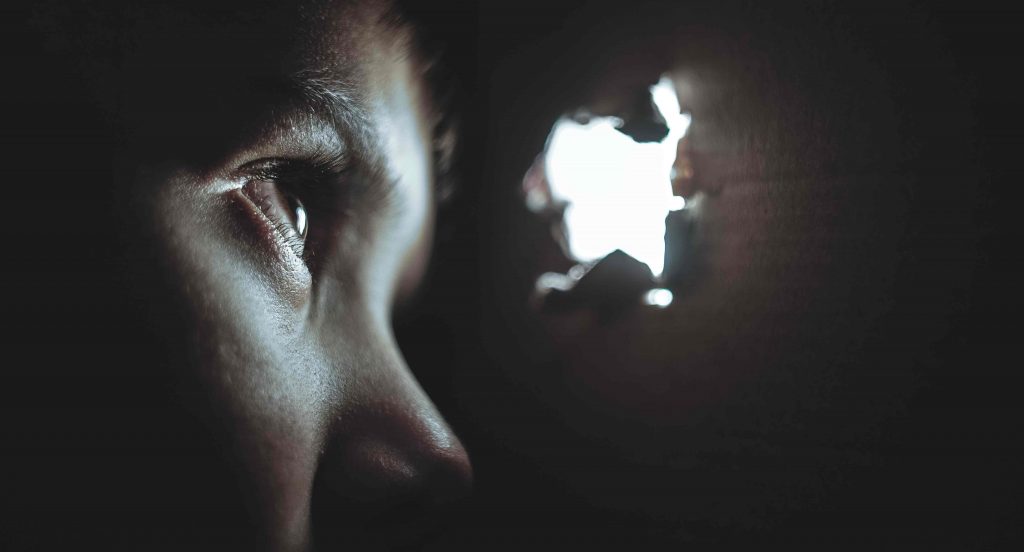"It often develops slowly, so one may not immediately realize what is going on. You may start seeing faded colours, halos around light, trouble seeing in the dark, and blurry, or even double vision. If you have been experiencing these symptoms, you might have a cataract."
What is a Cataract?
A cataract is a clouding of the lens which leads to a decrease in vision. This disease is currently affecting tens of millions of people worldwide.
It can affect one or both eyes. So, what is it exactly that causes these problems to your eye?
A cataract means reduced transparency and hardening of the eye lens that is normally clear. We usually experience cataract after reaching the age of 60, however, this is not a rule.
Apart from quitting smoking and wearing sunglasses when it’s sunny, there is not much you can do to prevent yourself from getting this illness.
Among the risk factors for cataract occurrence are mainly age and general diseases, such as diabetes, medicine on long-term bases, or eye injury.
A cataract may result in trouble driving, reading, or even recognizing faces. What’s more, the problems caused by cataract may even lead some patients to depression. As the clouding of the lens tends to get worse and worse, you cannot really get used to it and learn to live with this problem.
Cataracts are responsible for fifty per cent of all cases of blindness worldwide, that is over 20 million people.
Cataract Treatment - modern methods
Back in the days, developing a cataract practically meant eventually getting completely blind. Luckily, this is not the case anymore. Thanks to modern medicine, a clouded lens can be easily resolved. What vision surgeons are capable of doing with such a lens is replacing it with an artificial one.
A first step towards having your eye operated and gaining a perfect sight back is being diagnosed. There are many kinds of cataract and you will need to consult a doctor to learn more about your vision problem.
A cataract can be hard or soft, partial or complete, stationary or progressive. Age-related cataracts are usually one of the following: nuclear sclerosis, cortical, and posterior subcapsular.
How does your doctor carry out your diagnosis?
A cataract may be classified using the lens opacities classification system (LOCS III). That is how cataracts are classified as nuclear, cortial, or posterior. Further on, they are classified based on the severity on a scale from 1 to 5.
While certain medical procedures might only be available until a certain stage, one of the good things about cataract removal is that it may be performed at any moment and it no longer requires ripening of the lens.
How successful is the cataract surgery?
Even though there are several factors to this, the general success rate is very promising. About nine out of ten patients can achieve at least a 20/40 vision after surgery.
Cataract Removal - how is it done?
An idea of surgery often sounds intimidating to people.
How long does it take? Is it going to be painful? What risks are there? How much will the procedure help me?
With cataract surgery awaiting, you really do not need to worry. The surgery is performed in local anaesthesia.
The cloudy lens is painlessly crushed with ultrasound and removed through a microincision. Once the faulty lens has been removed, the doctor implants a new, high-quality lens.
One of the best parts of cataract surgery is the duration. Usually, you are good to go after ten minutes! The next day, the patient is usually asked to come for a check-up.
Types of Cataract Surgery - The Difference
The standard method requires a small incision to be done. This task is performed by a cataract surgeon.
- First, the eye is numbed by a subtenon injection or anaesthetic eye drops. Then it’s time for the corneal incision. Two cuts need to be made at the margin of the cornea. This allows instruments to be inserted into the eye.
- The next step is called the capsulorhexis. During this process, a needle or a tina pair of forceps is used and a circular hole is created in the capsule where the lens sits.
- Next, the lens is broken by a handheld ultrasonic probe and then emulsified into liquid by the ultrasound waves.
- The emulsion created is then sucked away from the eye.
- In order to prevent a collapse of the structure of the anterior chamber, which is in the front part of your eye, the fluid removed needs to be replaced with a saline solution.
And after all these steps, it is finally time for the new lens to be inserted. A synthetic lens is inserted into the same place where the natural lens used to be – the capsular bag.
To reduce the risk of infection, antibiotics may be injected into the eye.
And the very last step?
Saltwater is injected into the corneal wounds. This makes the area swell and seals the incision.
Does it sound complicated for a ten-minute process? Well, that is modern medicine for you. Precise and fast.
We have now explained the most common process. However, another option is a laser-assisted operation.
Laser Cataract Surgery
During laser cataract surgery, the incision is performed by laser. In Praga Medica, we use a femtosecond laser called LenSx.
What are the benefits of laser-assisted cataract removal?
Mainly, the precision is even higher and the recovery time is even faster than with a standard method.
What is the Cataract Surgery Cost
We have explained what a cataract is, what are its symptoms and what problems it causes, we have presented the medical options and their benefits and details. Last, but certainly not least, we need to discuss the price of such a surgery.
Our prices are much lower than those in western countries.
Does the cost of a cataract surgery still seem overwhelming?
You will be happy to learn that you might be a successful candidate for an EU refund. The Czech Republic, where Praga Medica is located, is an EEA member and operates European Directive on patients right in cross-border healthcare.
If you are coming from an EEA country, we will be glad to help with all documentation for your local healthcare authority or national health system and you might just as well get your money back.
The costs of cataract surgery may vary. The price of such a procedure really depends on the cost of the lens implant.
With Praga Medica, the lowest price would be 845 EUR for a monofocal lens implant.
However, going for a trifocal lens implant would already be 1350 EUR. Well, what does that even mean?
A Monofocal Lens
A monofocal is the most common type of intraocular lens (IOLs) used for cataract surgery.
How do they work?
Light entering the eye through this type of lens is bent to a single focus point on the retina. Light may not be focused from both near and distant objects at once.
What does that mean in practice?
A monofocal lens can only correct your vision at one distance. According to your vision difficulties, you need to choose whether you want to gain a good visual perception for near, or far distance.
Seeing well at a distance is the most common request among patients choosing a monofocal lens. This provides you with a good sight while driving or watching TV. Reading, working on a computer or writing might be examples of situations when you will still need to wear reading glasses.
A Trifocal Lens
Trifocal lenses are the most advanced IOLs available. These lenses can provide you with great vision for close, intermediate, and far distances.
You will see perfectly while cooking, reading, driving, working outdoors, typing on a PC, or doing sports. Choosing these lenses will leave you without the need for glasses for any activity. Therefore, this option is usually preferred by patients wishing to live an active life.
You might ask – why doesn’t everyone go for trifocal lenses if they are so good?
Apart from the higher price, implemented trifocal lenses do not always go without trouble.
After the surgery, some patients experience side effects, such as halos around lights in the dark. While this only occurs with some patients and tends to go away eventually, it may be an unbearable con of this kind of lenses.
Trifocal lenses are usually not recommended to people who work as drivers and often need to drive in the dark.
Booking a Cataract Surgery
Wow, that is a lot of information. How do I know which one is the correct option? Please contact us and one of our highly qualified vision consultants will help you with your choice.
As cataract surgery is among our most popular eye procedures, we are confident to say we have lots of experience with this kind of surgery.
We can offer you the precise work of our experienced board-certified cataract surgeons and English-speaking consultants.
Apart from the quality and affordable prices, we are proud of our quick surgery dates. Book a cataract surgery with Praga Medica today!


